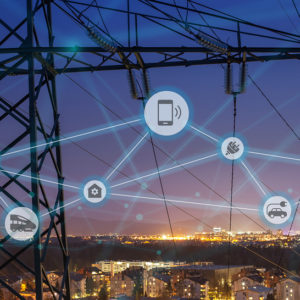A new rule from the Biden Environmental Protection Agency is pushing America’s power grid to become greener, but energy experts say they are worried the results will be brown. It could produce a lack of available electricity leading to brownouts for businesses and households across the U.S.
The EPA’s new rule, announced last week, requires most gas and coal-fired power plants currently in operation to cut their carbon-dioxide emissions by 90 percent by 2040 or shut down. It also discourages the construction of new gas-fired plants by imposing expensive new standards on them, too.
The EPA’s method for achieving those cuts from the plants that provide most of America’s electricity is “carbon capture,” preventing carbon emissions from reaching the atmosphere. The problem, experts say, is the technology doesn’t exist yet.
The National Mining Association, for example, has been an outspoken advocate for carbon capture. But in the wake of the rule, NMA’s spokesperson Conor Bernstein said the EPA’s proposal just isn’t realistic.
“Cost, technological maturity, and extraordinary infrastructure and permitting challenges all stand in the way,” Bernstein said. “Mandating the use of this technology at this stage is nothing more than another attempt to drive the coal fleet off the grid with immense ramifications for mining communities, consumers and …. the reliability of the nation’s power supply.”
And that reliability is in real danger, according to Glen Thomas, president of the industry group PJM Power Providers. It is one of the nation’s largest grid operators, providing electricity to 13 states and the District of Columbia. During a Pennsylvania state Senate hearing earlier this month, Thomas warned lawmakers that energy shortfalls were on the horizon, particularly on the Eastern seaboard.
“Demand is increasing, supply is retiring, and it’s not being replaced by the quantity of assets necessary to sustain reliability,” Thomas said.
The risk is very real, grid operators warn. On Christmas Eve last year, PJM asked its customers to “reduce their use of electricity” and “conserve as much as possible” in order to “help ensure adequate power supplies” as an Arctic air blast drove temperatures down. Two months later, PJM issued a report warning about 20 percent of its power generation could be retired by 2030. The new Biden EPA rule will only accelerate that process.
And it’s not just PJM. U.S. Rep. Cathy Rodgers (R-Wash.) pointed out in a letter to the Federal Energy Regulatory Commission last month that “blackouts, brownouts, and energy rationing have become far too common in the past few years.”
The primary cause of those disruptions, Rodgers wrote, is “a lack of generation capacity” due to “the premature retirement of dispatchable generation resources, like coal, nuclear, and natural gas, and the rapid expansion of intermittent resources, like wind and solar, onto the bulk power system.”
The Biden administration touts renewables like wind and solar as the solution. But even after years of subsidies, wind and solar combined provided just 15 percent of America’s electricity in 2022, less than the 18 percent from nuclear power. Fossil fuel continues to provide more than 60 percent of electricity on the grid.
Eliminating coal and natural gas without a reliable alternative puts the U.S. at risk of severe energy shortages. But according to Marlo Lewis, Jr. of the Competitive Enterprise Institute, that appears to be the Biden administration’s goal.
The new rule “will empower the EPA to regulate coal and natural gas generation out of the power sector,” Lewis said. “This is the government sending a very strong political signal: Don’t bother investing in new coal or combined cycle natural gas, and don’t spend a lot of money keeping older plants going.”
A spokesperson for the EPA told DCJournal, “EPA’s analysis found that power companies can implement the standards with a negligible impact on electricity prices.” Price fluctuations, she said, would remain “well within the range of historical fluctuations.”
And Andres Restrepo, a senior attorney for the Sierra Club’s Environmental Law Program, told DCJournal concerns about increased blackouts “don’t necessarily pencil out.” He believes the costs to consumers of the plan will be minimal.
“The biggest requirements, the really substantial emission reduction requirements for these sources, are not going to kick in until the 2030s,” Restrepo said. “At least for existing coal plants, those units are already running less and less often. They’ve been really substantially reducing their utilization. Requirements that those be carbon-neutral will drive significant retirements, but that’s happening anyway. It will just accelerate the pace of it.”
Opponents of the Biden rule say the U.S. Supreme Court is almost certain to shoot it down, as it did the EPA’s Obama-era “Clean Power Plan.” But the messaging to the energy industry to stay out of the fossil fuel space could result in more power plant retirements, even as demand for electricity rises. And that, said Craig Stevens with the pro-business group Grow America’s Infrastructure Now, would mean higher prices.
“The EPA’s proposed rules threaten the energy security power grid and will raise utility costs for Americans,” Stevens said. “The Biden administration is simultaneously pushing Americans to adopt electric everything – cars, stoves, trucks – but then announces rules that could cripple our already-strained power grid.
“They are learning an important lesson the hard way – American oil and gas fuels almost every aspect of our lives, including the electricity running through EVs.”

